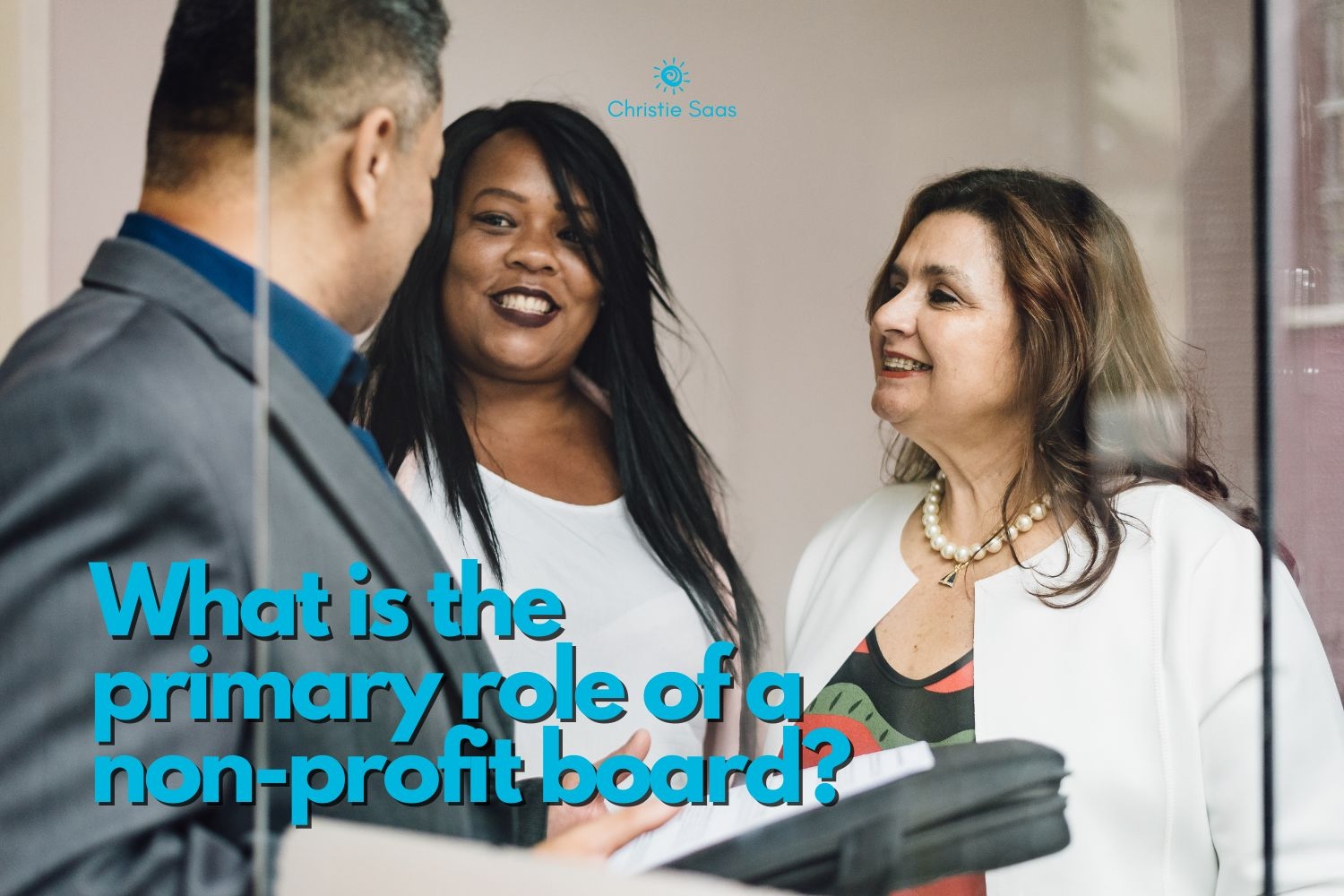Governing Policies: The Primary Role of a Non-Profit Board

Governing policies are probably one of the most challenging set of rules a non-profit will have. The policies themselves are not that difficult to understand, but it is the role of the governing policies and their place between the bylaws and the operational policies that causes confusion.
Familiar work feels easier.
Board members, especially first-time board members, come into a non-profit knowing more about its operations than its governance. They may have attended programs, used services, met the staff team, and may very well work in an operational role in their own jobs. When it comes time for a board to write its own rules, the governing policies, board members tend to default to management-type thinking, rather than thinking from a governance perspective. They do this because operational matters and operational policies are simply more familiar to them.
In smaller non-profits, where there is no paid staff team, and the board does all the governing AND all the operations, the challenge to keep governing policies and operations separate is even harder, but it can be done.
The board’s playbook has 4 sections.
To help board members understand governing policies, it helps to think of the policies as a playbook for the board containing 4 sections.
Section #1 – Strategic Goals
The founding members of a non-profit will have written a vision statement (big picture purpose of the organization) and a mission statement (the broad set of ways to achieve that purpose). It is the role of the board of the non-profit to interpret that vision and mission and turn it into strategic goals. This is achieved by understanding the collective needs, trends, and barriers of the members and stakeholders.
How a non-profit board will collect the information from members and stakeholders, examine it prior to strategic planning, and turn that information into strategic goals are the very details that are captured in this first section of the governing policies.
Section #2 – Board Procedures
As the board goes about doing its work in section #1, it needs to have its own rules for how it will behave as a governing entity. Even if the board handles some (or all) of the management of the non-profit, this section is only about how the board will behave while it is governing.
This section will capture the rule for board members themselves, such as expectations of board members, attendance at meeting, roles of board members, roles of board officers, roles of board committees, self-evaluation, accountability, conflict of interest, and any other details pertaining to the board’s governing job.
Section #3 – Delegation to Management
Whether a non-profit has a large staff team, a small staff team, or no staff team, the details of who does the work and what that work is, need to be recorded.
This section will capture the rules for WHO will handle the management of the non-profit, WHAT they are expected to do in that management, how they will REPORT back to the board, and how that work will be EVALUATED.
When a non-profit is growing, this section will change often. Initially, this section might outline the rules for management committees to be developed within the board, which board members will sit on those committees, and how the work will get done.
As a non-profit grows, and a staff team is hired, this section will be rewritten to outline what duties the staff team will handle and how the staff team will be evaluated.
When a non-profit progresses to become a full policy governance organization, the board will hire only one person, the executive director, and will delegate full management duties to that person. The ED will go on to hire a staff team to help complete the work. The staff team will report back to the ED, and the ED will report back to the board.
Section #4 – Management Boundaries
It doesn’t matter if a non-profit uses its volunteer board members to do the management work, or a full staff team to do the management work, the board needs to define the boundaries within which that work is done.
This section is important for the more obvious details, such as requiring the people doing the management work to not break the law, to always have a pre-approved budget for the year, and to keep insurance up to date. This section also captures more nuanced details such as the board’s preference for types of banking, treatment of clients, number of signatures on payments, and monthly financial reporting.
The details recorded in this section are written in such a way to give the management team some autonomy to make their own decisions, provided they work within the boundaries provided by the board.
Differentiate between governing and management.
The board’s governing policies fall in between the bylaws and management’s policies. The governing policies are the rule book the board develops for how it will function as a governing entity.
When governing policies are filled with the minutia of operational detail, they become muddled, and it is difficult to decern what is a governance function and what is a management function.
When governing policies embrace the board’s governing role, follow the 4-section structure, and stay out of management, they become a very clear and usable guide for board members to effectively govern the organization.
How to get started.
The first step for a non-profit leader to learn more about governing policies is to do a little reading and reflection.
- Find a copy of your non-profit’s Governing Policies. DO THIS>> Determine the date of the most recent update.
- Read your Governing Policies. DO THIS>> Look for the 4-section framework. Determine if the policies clearly differentiate between governance and operations.
- Find out the policy review schedule. DO THIS>> Learn how often policies are reviewed. Suggest a review schedule if nothing is planned.
Once completed, non-profit leader will have a much better understanding of the difference between the role of the board and the role of the staff team.
What surprises did you find?
Remember, management decisions are much more familiar to board members, especially first-time board members. Are the governing policies for your non-profit clear and governance-focused, or are they muddled and cross the line into management? When you finish your homework, I’d love to hear what surprises you found in your Bylaws. Please use the form on the right side of the page to let me know. If you have questions, and I love questions, I want to know that too!
-Christie
…
Hi, I'm Christie Saas, current Executive Director, past board member, and non-profit volunteer. I remember well, those early years when I lacked the training, the confidence, and the work-life balance to focus on becoming the best non-profit leader I could be.
Fast-forward past many bumps in the road, lessons learned, and you’ll find me still in the trenches, but a little wiser, a little calmer, and a whole lot happier. I love my work and I want to help you love yours too.
I created ChristieSaas.com so non-profit leaders never need to feel alone. I’m here to help. If you’re a brand-new non-profit leader, or a little more seasoned, someone who’s looking to make a meaningful contribution and still have time for a full life away from the job, you’re in the right place.
© Christie Saas 2023 All Rights Reserved
…
Want to learn more?
Start with one of my free resources.


